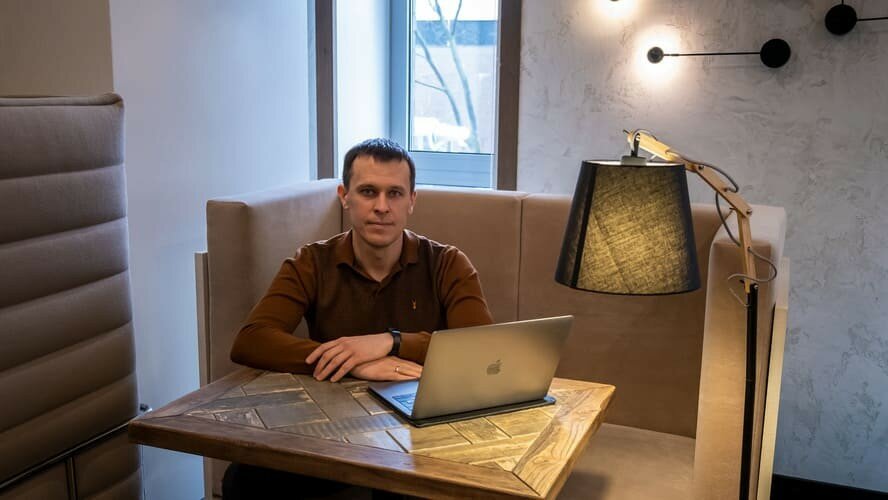Interview with Maxim Zakharov, who has been engaged in algorithmic trading for seven years and who has perfectly mastered the strategy and tactics of an algorithmic trader
No need to be a genius
- Maksim, how did you get into Trading? After all, a beginner or a random person, decided to try stock trading, won't do it, what did you do. How can you do more 83 thousand transactions per month?
- It's about the specifics of the approach, which i use. That is, it is algorithmic trading: All transactions are made automatically. There is an element of manual adjustment, but he, rather, is not associated with opening a position, and with the inclusion of the necessary algorithms at certain points in time. How it happens? I look at the market, I see a certain situation and I can turn on a certain robot for a certain period. And he can make 100 transactions in a few minutes.
- Here we get to the point.. Means, robots and algorithmic trading help to make such a large number of transactions?
- Yes. It is impossible to make so many transactions with your hands.
— How did you become an algorithmic trader??
- Education and inclinations played a decisive role. I graduated from the Ryazan State Radio Engineering University (РГРТУ). And a penchant for programming and mathematics is just from this area. Even when I was in a regular public school, things, related to mathematics and programming, then on the ZX Spectrum, I was very interested. So whatever I do, still shifted towards programming, even in college, where programming was a non-core subject.
- Learned math with A's?
- Not. I was not the most diligent student. I mostly got fours..
- That is, you do not need to be an excellent student or a mathematical genius, to become an algorithmic trader?
- Absolutely! History knows many cases, when candidates of mathematical sciences in this area did not achieve positive results.
Friendly team of robots
- You won in this category, became the most active participant. And in life, such a number of transactions affects financial success.?
- About the competition in general, and even more so I learned about the victory in it after, when they called me and said: "You won!». Such trade is not specifically for the competition..
- It turns out, the strategy you used was ordinary? But so good, which allowed to show such a brilliant result?
- In fact, the number of transactions does not characterize profitability in any way. However, the main goal is to earn. Can do not 80 thousand, and 200 thousands of transactions and still get nothing. This is not an indicator.
- Did you have any awards in competitions before?, participated in the annual competition "The Best Private Investor"?
- Not, I didn't participate in LCH. Yes, and others too.
— Back to the number of transactions. They, who has been on the market for a long time, can say: "What's the point in 80 thousands of transactions? I'll take one, and she will cover everything, it will be enough ". But this needs to be clarified., how it works robot according to your strategy. Tell us more about it.
- In my case, we are not talking about any particular robot. This is an integrated approach - a pool of robots, a bunch of algorithms, each of which has its own applications and its own transactions. But in general, this whole system just results in such a large number of transactions. If you take one specific robot, he can make one trade per hour or even less often. And when you collect them in a "collective", then in total they will give such a large number of transactions. If you look at the volume of each transaction, we'll see, that almost all of them were small.

Maxim Zakharov Maxim Zakharov
Bought and sold many times
Let's imagine a person, counting, that his deal is when he logged into the app, Bought, allowable, Gazprom shares. This is one deal. And then I sold it - this is the second. How can I explain to him in general, what is the work of an algorithmic trader?
— When this person buys or sells, he's on to something, for example, analyst recommendations. Algo trading also has recommendations, but they are a set of certain patterns. If there is an intersection of any specific two lines, then the algorithm buys. If there is a divergence of these lines by a given value, then the algorithm sells independently of everything else.
- In other words, you give the robot a command: if the price of Gazprom shares is like this, then we sell, and if so, we buy? And track the constant fluctuations?
— Each robot operates with a set of metrics. And everyone has their own. Some robots have a couple of them, some have more. By testing certain combinations of these metrics and their values are selected, when you need to open or close a position, retain, roll over and the like.
How are these metrics chosen?, and how they show, what is really viable?
— Metrics can be very different: volume, open interest, price measurement. And viability is confirmed only by testing and real trading. History and metrics are taken, and fully modeled market. AND, respectively, are run on this interval - real trading emulation. And we understand, what, if the robot was turned on during this period of time, he would, having made so many transactions, would exit at the end with such and such parameters: profit, drawdowns and more. And we conclude: whether to launch something similar in real trading, whether to further investigate or change something.
- It turns out, that we are testing real data, received from the exchange?
- Yes, from the real market.
Maxim ZakharovMaxim Zakharov
Not the Grail
- So, we set some requirements for our system, which reacted so to these movements. Got the result. What's next? We backdated the system. Looking ahead and waiting, that the system should bring some percentage. But she doesn't bring it.. Why?
- This is also possible and happens often.. There may be several reasons. The market has changed. Usually, in 95% cases, people initially set the wrong conditions. Especially, when they just start. In the real market, the robot would not trade like that, as he showed on the test. Means, some mistakes were made or some factors were not taken into account, Delay, Commission, or something else is incomplete. Second. If the robot is trading actively enough, then on illiquid instruments he himself can change the market. That is, when the robot is turned on, the market behaves in the same way. And when it's off - different. This is only true for small timeframes.. On big robots, arbitrators, any distortions level, and the market will go there, where did he have to go. But on small timeframes, the robot can just influence the market and change it. Therefore, it turns out, what's on the test, but the real market is different..
- It needs a lot of money.?
- Not, need not.
- Making a profit in the market is kind of like treasure hunting. Got to find some kind of system. You speak: "Means, wrong data". coming out, there is a certain set of correct data, which will create such a system? The notorious grail?
- Not certainly in that way. In this case, the treasure is, rather, one kind of small coin. And here comes the constant search for these little coins. There's no such thing, that we found a big chest and live happily ever after. The market is constantly changing, you need to constantly make some adjustments and look for something new. If you do not touch the robots for a long time, then most likely they will stop earning altogether.
- And how old is your old-timer?
- Ago, to which no changes have been made., a few months. Although… I won't say for sure. Because robots are so different. There are algorithms, included literally once a month.
Continuation of the interview - about choosing a trading session and setting up robots - read in the next publication.



